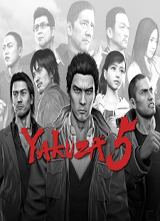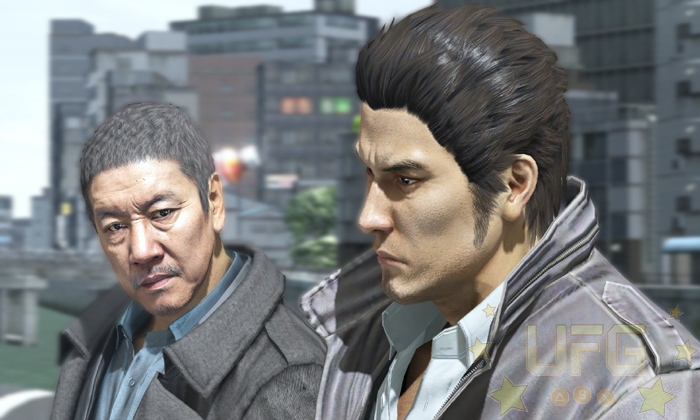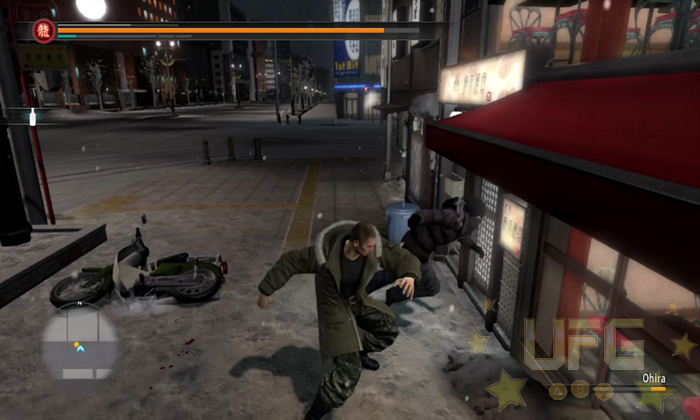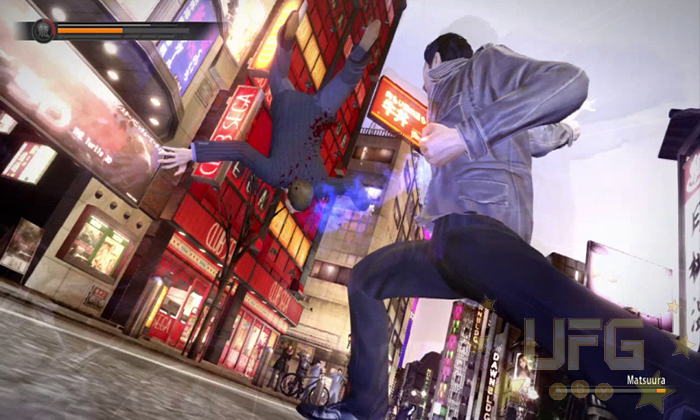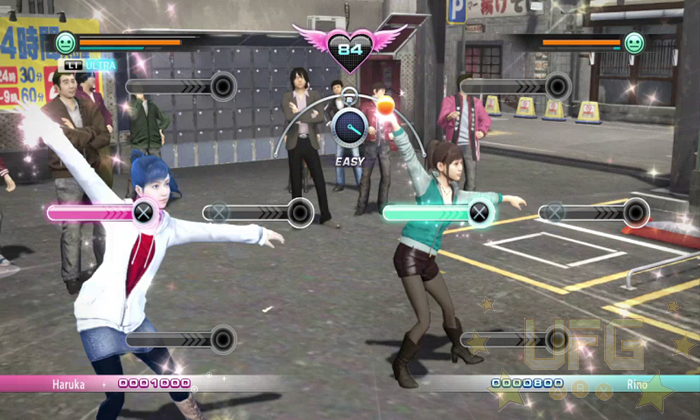Yakuza 5
There is something inherently fascinating about the Yakuza series in how it defies modern gaming conventions, yet still provides a captivating experience. Of course, being that it wasn’t created for a Western audience some of the appeal could come from the fact that it gives us a brief glimpse into Japan’s underbelly. What’s shown is incredibly exaggerated mind you, but it’s there to enthrall us nonetheless. Then there’s the ever so popular drama between the cast members, interesting gameplay mechanics, and odd assortment of mini-games. I wonder though. After five titles (not including the spin-off, Dead Souls) is the allure of Yakuza’s idiosyncrasies starting to wear thin?
Yakuza 5 takes place two years following the events of the last game. In an effort to distance himself from certain people, our anti-hero, Kazuma Kiryu has left the world of organized crime and moved to Fukuoka. Since then, he’s been living a modest life as a taxi driver with only the occasional scuffle here and there. Back in Tokyo though, things aren’t looking too good as the 7th chairman of the Omi Alliance is reportedly dying. Daigo Dojima, the 6th chairman of the Tojo Clan (Kiryu’s old Yakuza outfit), believes that their truce with the Omi Alliance will end once he dies and has sought help from smaller organizations as the threat of war looms over everyone. Of course, Dojima isn’t the only person on the move. Secret alliances are made, plans are drawn up, and knives are sharpened so they’ll easily slide between unsuspecting vertebrae.
The fates of many hang in the balance as members from the two largest organized crime syndicates in Japan vie for power. Nearly every living character from the series’ past is pulled into the coming conflict in one way or another which heightens the severity of the situation. Gamers will see these events unfold through the eyes of five protagonists: legendary Yakuza Kazuma Kiryu, aspiring idol Haruka Sawamura, Tojo enforcer Taiga Saejima, money lender Shun Akiyama, and former rookie pro baseball player Tatsuo Shinada. Thankfully, given how SEGA labors over the details, the storyline is accessible to just about anyone. Longtime fans and new comers alike will be on the edge of their seats as the plot unfolds and contorts in ways common to a campy drama.
Taking a step back for a second, the Yakuza series isn’t designed like similar open-world games. In fact, the word “open” may be a misnomer. Bringing up the map will usually show a small area housed within invisible walls where only a handful of buildings and shops can be entered. And even though this game depicts the life of harden criminals, there aren’t any opportunities for wanton destruction – you won’t be stealing cars, shooting pedestrians, or causing much mischief outside of the story. Speaking of guns, their use is a rare occurrence. Most issues, whether it’s via active combat or quick timed events, are resolved with your fists. If you’re thinking Shenmue, you have the right idea.
Even though you’re playing in a small sandbox, that doesn’t mean that Yakuza 5 is boring. Just from a visual perspective, the cities you’ll run around in are more captivating than some of our stomping grounds; the cultural differences help to elicit a touristy vide (but not in a tawdry type of way). On top of that, there is a smorgasbord of activities just waiting to be stumbled upon. There’s fishing, hunting, gambling, ramen cooking, chicken racing, drag racing, first-person snow ball fighting and a multitude of other mini-games available for those looking to ditch the main story for a few hundred hours.
The melee focused combat is also worth noting. Putting aside the fact that I love Beat’em ups, one of the most enjoyable aspects of Yakuza 5 was the fighting. Button mashing is a viable option for the random hooligan, but tougher enemies require utilizing a character’s combos and ability to dodge unblockable attacks. Land enough hits without receiving damage to build up the “heat meter” and you’ll be able to unleash powerful super moves. Contextualized grappling is also a key mechanic. Grabbing a goon by the collar when near a wall provides you with opportunity to slam their face into the masonry. Weapons like knives, chairs, and street signs can be used to batter foes as well. As you level each character, you’ll unlock more ways to put the hurt on rival Yakuza. Regardless of your tactics though, the effects are usually brutal. It’s entertaining in the most basic of ways.
Going back to the story, I really enjoyed how surreal everything was. All of the characters played their parts as serious as possible. Action scenes are punctuated with melodrama and long conversations about honor, trust and fulfilling one’s dreams. It’s typical of anime or manga, but the characters here are trying to be as realistic as possible. Then there are the crazy happenings; I once punched out a giant bear as Saejima while trying to escape snowmobile riding Yakuza. Overall, we get an odd juxtaposition of the normal and abnormal events and characters that actually works well together. This is also seen in the gameplay. During Haruka Sawamura’s segments, the fighting is replaced with American Idol-like battles. Singing and dancing, activating costume changes during concerts – it feels like an entirely different game. And yet it fits with all of the underworld stuff that takes place in the chapters before it.
Following the characters through their individual paths to see how they intersected was part of the fun. Unfortunately, there are some nagging issues that almost completely ruin my experience. One of the problems comes in the form of the mini-games. While it’s great to have so many in one game, the way in which a lot of them are introduced to the player is obnoxious. In an effort not to spoil anything, I’ll give a hypothetical scenario. Let’s say you are hot on the trail of a killer. In the middle of hunting down some leads, a random NPC pops out of an ally and asks you for help. Without giving you a chance to say no, you’re whisked away to a remote location to perform some task. Depending on what it is, the mini-game could take a decent amount of time to complete. All the while, you’re wondering when you’ll be able to get back to the story.
Now, I understand why a developer would do this. I mean, you’d want to let players know about certain activities scattered about each map. But the interruptions are frequent enough to warrant high levels of frustration. Adding insult to injury, some of the forced mini-game sessions were activities that were introduced in earlier chapters. When things grew tense and the bodies started piling up, the last thing I wanted to do was help a vendor sell assorted meats.
The other thing that derailed my enjoyment was the entire final chapter. For starters, it featured some of the game’s longest and most difficult boss fights. With no way to save your progress (you had to complete the chapter in one go) the encounters grew exhausting. All of the fun I thought I was having vanished as my screen was dominated by QTE’s; thankfully I was dexterous enough to get through the constant tapping of “X”. It would have been worth it, though, if the plot didn’t take a bad turn towards the end, tarnishing an otherwise intriguing story. To be blunt, the revelations were cringe worthy. “All of the fighting and this was your final goal? This could have accomplished a chapter or two ago. Just put a bullet in such and such and be done with it.” Thoughts like these raged through my brain as I pondered whether or not I had wasted my time hoping for a grand display (or at the very least, something that would make sense of the backstabbing, misdirection, and all around random behavior amongst the cast). Observing the anticlimactic end was like throwing salt into an open wound.
Yakuza 5 is an aged title. It was first released back in Japan on December 6th, 2012. That said, its date of creation alone doesn’t make it feel old. The issues I had with this sequel are present in the past titles as well. I’m not sure if I’ve grown out of them or if the charm of being different has finally caught up to this series. Either way, one should never feel like they wasted their time after seeing the credits roll. And while the game isn’t completely void of value – I rather enjoyed the combat mechanics, cultural differences, and mini-games that weren’t forced on me – the series as a whole needs to evolve. Of course, it will continue to sell like crazy in Japan, making my claims of needed change seem unwarranted. But I’m sure I’m not the only person who has gotten older, where time spent doing anything is a big deal.
Honorable Mention: The complete change of pace during the third chapter (the American Idol segments) was something I hadn’t seen before. I mean, there are titles that slowly evolve into different genres as you continue to play them. But none of them changes the gameplay so drastically for a large portion of a game before going back to normal. The fact that SEGA could do that without alienating the player in a story based game shows their commitment to developing a proper narrative. If only this carried throughout the rest of the game…
Gameplay:
6
Yakuza 5 certainly has its good points. The forced mini-games, disappointing plot and frustrating final chapter weighs heavy on its appeal though.
Graphics:
7
The visuals are noticeably dated. That said, they are charming in their own right.
Sound:
10
The voice acting is great; I love the fact that SEGA subbed the dialogue as opposed to dubbing it.
Replay Value:
4
There is a game plus (+) mode of sorts, vs modes, and extra activities to unlock once you complete the game. That said, I don’t see myself ever playing Yakuza 5 again.
Final Score:
6.8
